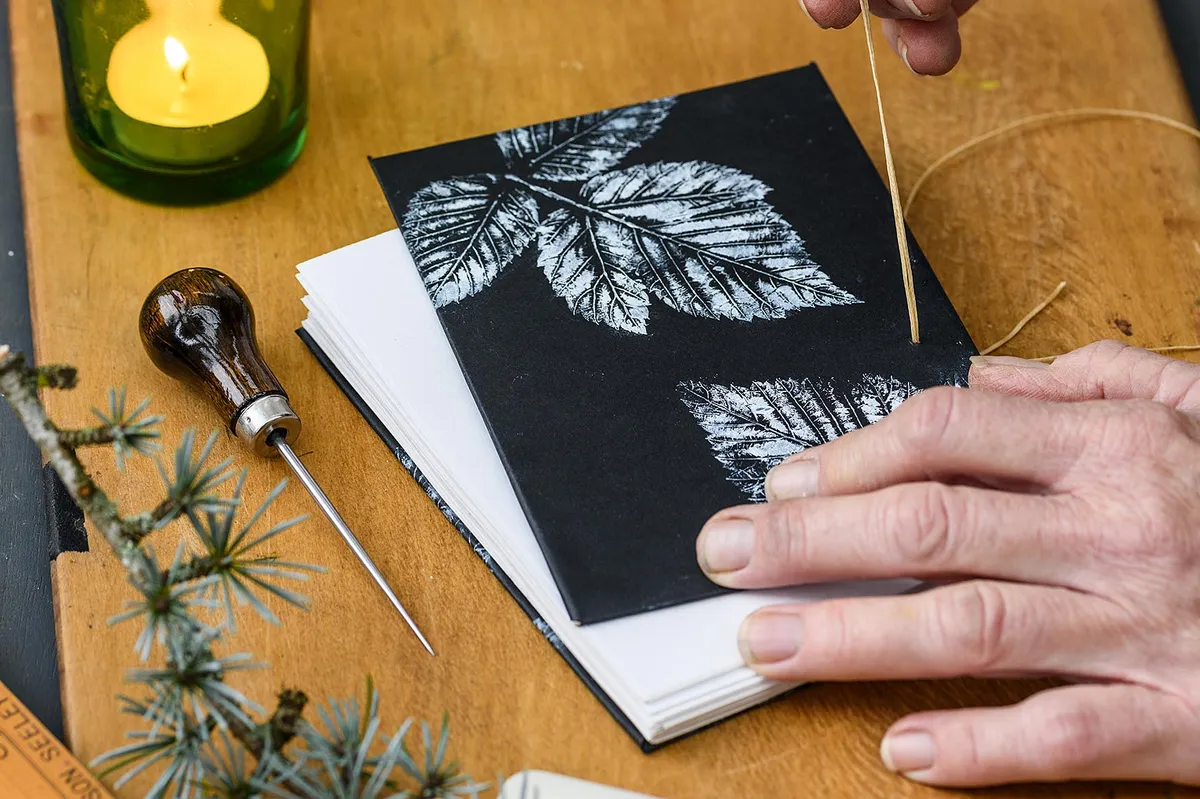One of the best ways to cherish the joy of gardening and appreciate the beauty of the natural world is to keep a garden journal. Whether you use it simply to jot down your observations about the diversity of life, sharing your garden or to record sowing and harvesting dates, weather patterns and lunar cycles, bulb planting schemes or garden plans, a garden journal is an invaluable source of information and it is so much more personal if you make it yourself. Producing your own bespoke books is addictive but also makes a thoughtful, hand-crafted gift for a fellow gardener.
Jacky features a series of natural Christmas craft and making ideas in December's issue of Gardens Illustrated. Subscribe here.
How to make a garden journal
Tools and materials
- An awl for punching holes
- Waxed cotton or embroidery threads
- A sturdy needle, ruler
- Scissors or guillotine
- A supply of blank or lined paper for the pages and card for the covers
- PVA glue
- A bone folder
- Pressed or dried leaves for decorating
- Oil paint for nature printing
- Old vintage botanical prints for decoupage.

Making your own garden journal
- Designing your own garden journal or sketchbook gives you control over size and paper type depending on how you intend to use it. I’ve used the coptic stitch technique to bind the pages, a glueless method with exposed stitching and you can find out how to do this from many online tutorials (I found DAS Bookbinding : How to make a Coptic Sewn Journal on You Tube to be the most helpful).
- To make the journal, the folded sheets of paper or folios are placed into bundles to create sections of pages, known in bookbinding as signatures. These are then stacked together and placed between two pre-decorated book covers. Using the awl, punch holes at measured distances in the folded creases and along the book covers then sew together with waxed thread.
- Cover decoration can be as simple as glueing on a decorative wallpaper or wrapping paper or you could cut out images from old botanical prints to decoupage your own design. Try nature printing from freshly cut leaves by gently pressing the underside of the leaf primed with neat oil paint directly onto the card. Adding ink and watercolour to enhance the parts difficult to reproduce can produce an exciting range of effects. Entire pressed leaves, such as ferns and bracken fronds, can be glued on or made into mini forest scenes for Christmas cards.